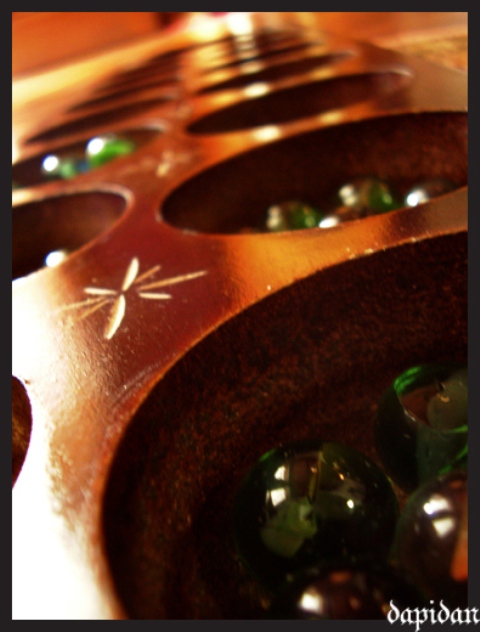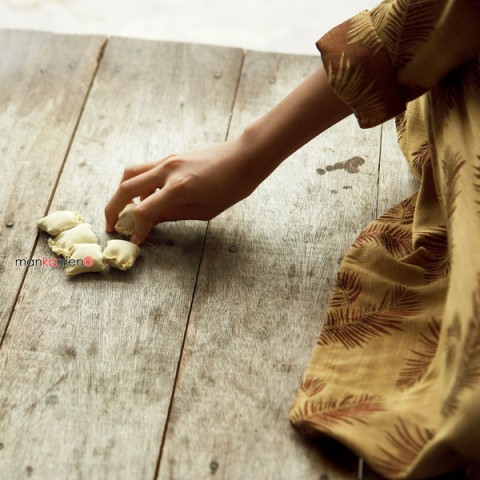With the rich melting pot of various races and religion living in Malaysia, our country is rich in a plethora of traditional games from the different races. What started off as traditional games’ belonging to a specific race was then played together by children of different races in the village (kampung). These games then lost its racial tag and became indigenous games we could all play regardless of race, religion and colour. Two of the most popular traditional games played by children are congkak and batu seremban. There is no doubt that these traditional games are a part of our cultural heritage that is priceless and symbolizes our culture, and identity of one nation.
1) Congkak

Photo credit: 大皮蛋 / Foter / Creative Commons Attribution-NonCommercial-ShareAlike 2.0 Generic (CC BY-NC-SA 2.0)
Congkak, which is often considered a game for girls, is a mancala game of Malay origin played in Malaysia, Singapore, Brunei, Southern Thailand, and some parts of Sumatra and Borneo. It has simple rules that allow the boards to have different numbers of holes. The Congkak board has fourteen holes in two sets of seven (some have ten holes in two sets of five, some have eighteen holes in two sets of nine), plus an additional bigger store-hole for each player. Each player controls the seven holes on their side of the board, and their score is the number of seeds in their left-hand store. In Indonesia, the holes are called anak (“child”), while the larger store holes are called indung (“mother”). The word congkak is believed to originate from old Malay “congak”, meaning “mental calculation” which is practiced in this game. It is regarded that an efficient player who mentally calculates a few steps in advance will have an advantage in collecting points to win the game. The word congkak or congklak also means cowrie shells, used in the game.
2) Batu Seremban

Photo Credit: Azhar Nizam & Ella, Flickr
Batu Seremban or five stones is a traditional game usually played by girls, either individually, or in a group of two to four people or more four. The game requires five stones or any five small objects known as ‘buah’ to play with. Besides the common five ‘buah’, players can also choose to play with seven or nine ‘buah’. Marbles, rubber seeds, medium sized pebbles or other round and medium size objects are usually used in this game, and the objects are called buah (fruit).
The main goal of the game is to throw the stone one at a time in the air and simultaneously picking another stone on the floor (the number of stones you pick up will increase as the game continues).
Before the game starts, one by one, players are required to weigh the ‘buah’ to determine who will play first, second, third and so on. All of the ‘buah’ is placed on the palm of the hand and be tossed to the air. Then it will be catch using the back of the hand. After that, throw the ‘buah’ from the back of the hand and catch it with the palm. The player with the highest points will be the first player and so on.
There are several stages or different ways to catch the ‘buah’ when we play Batu Seremban. Begin with the first stage by using a ‘buah’ and go through to a higher level or the top level which is called the ‘buah tujuh’ or fruit of seven. After completing all the stages, the player must weigh the ‘buah’ and the points are given by counting the number of ‘buah’ caught at the end of the weigh. A player can play until the ‘buah’ cannot be collected or the main ‘buah’ has fallen to the ground before collecting the other ‘buah’.
Homepage highlight photo credit: Ong Min Tien, Flickr
Source: The Expat May 2014
Read more:
- 8 Amazing Photographs Snapped by a Malaysian Photographer
- 7 Unique Paintings by a Malaysian Artist
- An Expat’s Skydiving Experience in New Zealand
What are your thoughts on this article? Let us know by commenting below.No registration needed.


















